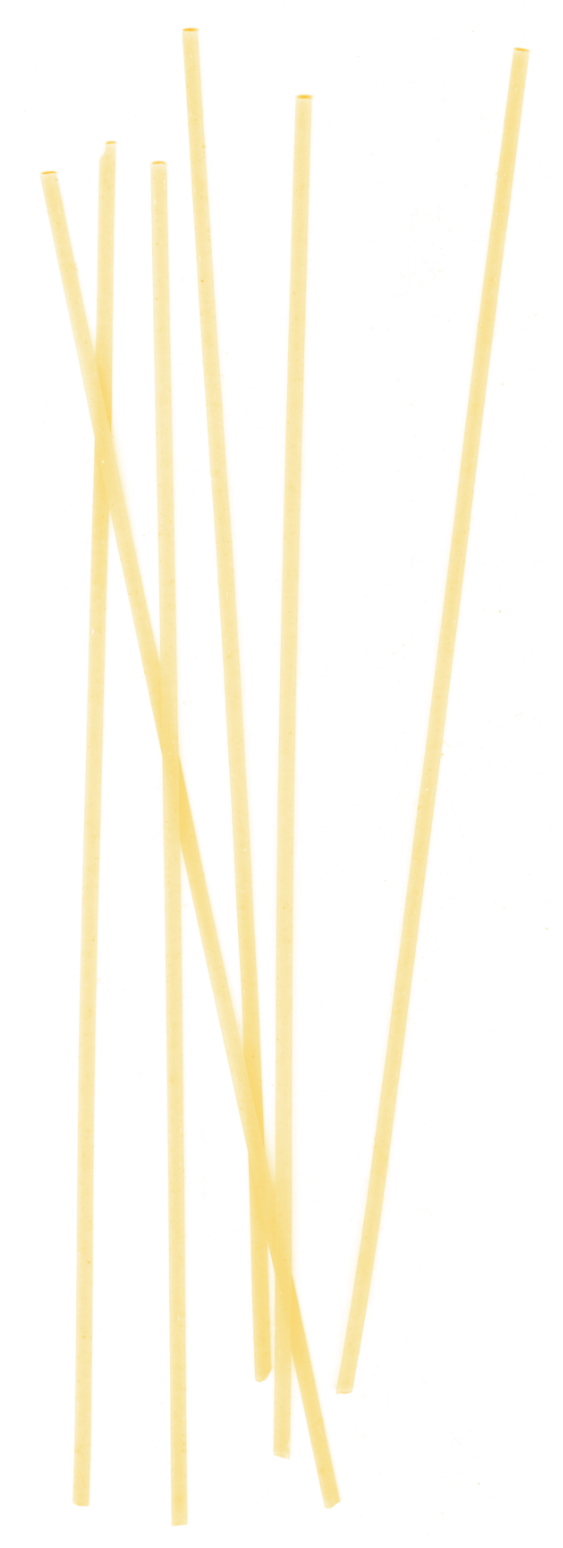WHERE FOUND
Throughout Italy, with Bavette and Trenette used especially in Liguria and the wider cuts more common to central and southern Italy.
Factory-made pasta shaped like thin tagliatelle, but usually convex. The name varies according to width and place. The noodles are boiled in abundant salted water or in broth.
Linguine, the more common name. It simply means “little tongues” as long as spaghetti. The pasta has some of the sturdiness of a cylinder and some of the folding properties of flat noodles. It is commonly used, especially with seafood-and tomato-based sauces.
They are blessed with a larger surface area than spaghetti, so they get coated in that little bit more sauce, and they are slightly chunky so they retain a marvelous bite when cooked properly.
Linguine
cooking time: 13 min.
CONCEPT
The geometric line is an invisible thing. It is the track made by the moving point; that is, its product. It is created by movement specifically through the destruction of the intense self-contained repose of the point. Here, the leap out of the static into the dynamic occurs.
The line is, therefore, the greatest antithesis to the pictorial proto element the point. Viewed in the strictest sense, it can be designated as a secondary element.
